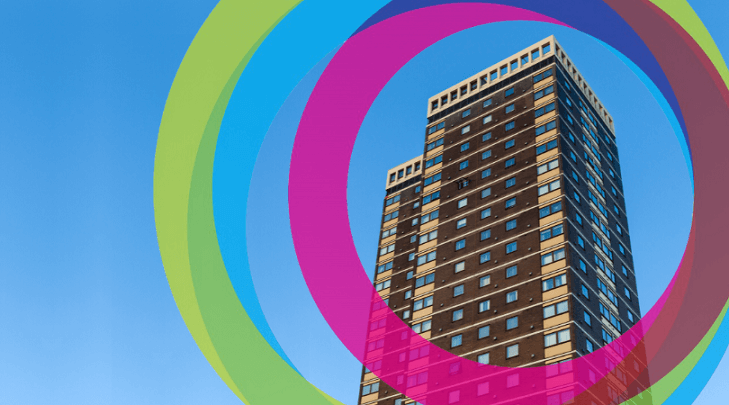Buying the freehold of your property will give you lots of benefits. For example, you can control service charges, extend your lease (usually at no extra cost) and you won’t have to pay ground rent.
In her latest article, Hannah Faith, Leasehold Property Specialist, explores the options available to flat owners who wish to own the freehold of their building.
What is freehold on a property?
Ownership of your flat as a leaseholder can be a confusing and sometimes complex arrangement.
As a flat owner you may never have had to concern yourself with the difference between owning the freehold and leasehold title to your flat, let alone seek to purchase the freehold.
Put simply, the freehold owner of a block of flats (aka the freeholder) is the owner of the building and the land it sits on.
We’ve defined the freehold, and what it means to own a share of the freehold, in more detail in our dedicated article, which can be read here.
What is the leasehold?
Out of that freehold-ownership the freeholder (or a previous freeholder) will have sold off the individual flats on long leases, each for a period of years, often 99 years.
The right to live in the individual flat for 99 years will gradually reduce over time and the value of that right, known as a leasehold, will reduce.
The 80 year problem
When the lease on your property approaches or falls below 80 years, problems can arise that may encourage you to buy the freehold of your property.
Read about the issues of a ‘short lease’ here.
Another big factor that may incentivise you to buy the freehold is high ground rent. Read about ground rent issues here.
For the purposes of this article, we’ll assume that you are aware of the above issues and have already decided to buy your property’s freehold.
How do I purchase the freehold of my property?
Flat owners, (aka leaseholders), may have the right to purchase the freehold of the whole building. This may be done in one of two ways:
- By being offered the chance to purchase the freehold through a process known as the Right to First Refusal; or
- By forcing the sale of the freehold through Collective Enfranchisement.
Although both legal processes lead to the same outcome, (i.e. ownership of the freehold by the leaseholders), each of these processes are different, have their own benefits and will apply in different circumstances.
What is right of first refusal?
If a freeholder looks to sell their freehold title (the ownership of the freehold) they must first offer it to the existing flat owners, via Section 5 Notices.
This obligation is known as the Right of First Refusal (ROFR).
More than 50% of the total flat owners in the building would need to join together to successfully accept the offer i.e. 51% or more.
What if the Right of First Refusal isn’t provided?
Failing to provide the Right of First Refusal is a criminal offence.
In addition, even though the sale may have gone ahead to an unrelated third-party, if a freeholder has failed to first offer the freehold to the existing flat owners, they may take retrospective action to force the sale to them.
There are some exceptions where the freeholder can be transferred without triggering the Right of First Refusal, which we can advise on.
There are strict timetables in place if you receive such an offer as a flat owner, so we recommend obtaining legal advice as soon as possible. Our specialist team here at Frettens would of course be delighted to assist.
Read more about the ROFR in our dedicated article here.
What is collective enfranchisement?
Collectively the flat owners in a building can join together to force a freeholder to sell to them their freehold. This is known as the right to Collective Enfranchisement.
It differs from the Right to First Refusal in that it provides flat owners with the opportunity to force the freeholder to sell, even if they don’t want to; the Right of First Refusal can be exercised only when the freeholder has decided to sell.
To exercise a right to Collective Enfranchisement there must be a majority of the flat owners seeking to purchase the freehold (i.e. at least 50%), there must be 2 or more flats within the building and the building must meet other qualifying criteria.
Read more about the collective enfranchisement in our dedicated article here.
Buying the freehold: Our advice
Hannah Faith says: “In our dedicated Right of First Refusal and Collective Enfranchisement articles we outline the pros and cons of each method.
I recommend reading both of these articles first before taking action, to ensure that you take the most suitable route for your circumstances.
Alternatively, if you simply want to extend your lease or reduce your ground rent, without buying the freehold, there are options for this too. Read our article on lease extensions here, and varying ground rent here.”
Specialist solicitors for freehold purchase
If you have any questions following this article, please don't hesitate to get in touch with our bright Leasehold Property team.
The team have experience in all aspects of leasehold property including freehold purchase, both through ROFR and Collective Enfranchisement. We would be happy to assist you with this.
Call us on 01202 499255, or fill out the form at the top of this page, for a free initial chat.





Comments